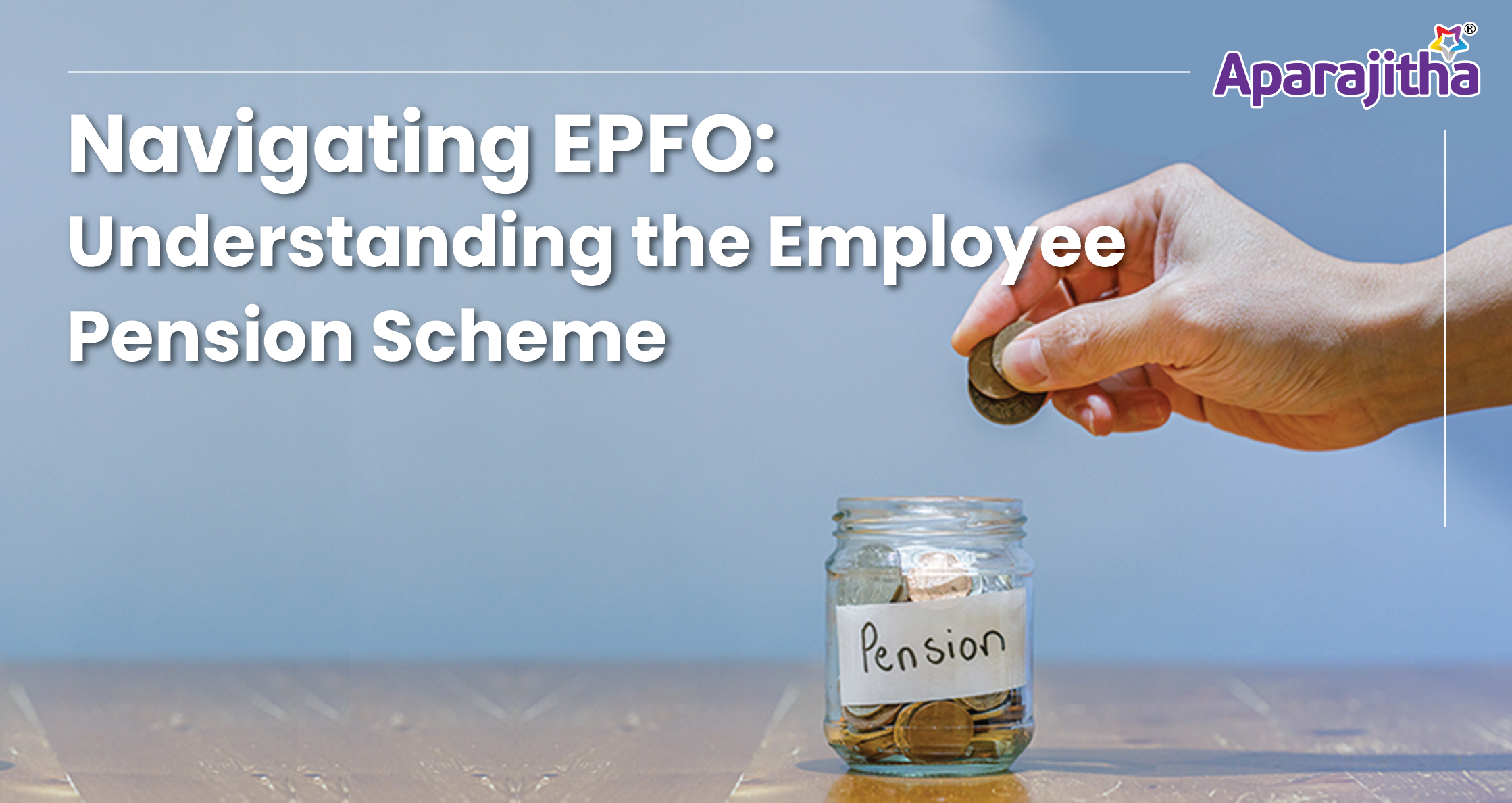What is Employee Pension Scheme?
The Employee Provident Fund Organization (EPFO) is a Social Security Organization that regulates three schemes, which are (a) the Employee Provident Funds Scheme, 1952, (b) Employee Pension Scheme, 1995 (EPS), and (c) Employees’ Deposit – Linked Insurance Scheme, 1976. It mandates employees working in the organized sector to contribute along with the employers towards a provident fund, pension scheme, and insurance scheme, which will, in turn, benefit the employee. It provides monthly pension under EPS as well as a lump sum amount under EPF upon retirement at the age of 58 years. The scheme mandates that to whoever applicable, the employee as well employer are to make a contribution of 12% (of the wages) each towards the EPF and EPS. The default arrangement of the employer’s contribution is split towards two different funds – (a) 8.33% of the contribution towards the pension scheme and (b) the remaining will go towards the provident fund. The employer is obligated under the statute to contribute up to the maximum wage ceiling of INR 15,000 per month. The Government has the power to change the upper cap on the wage ceiling whenever required.
Difference Between EPF and EPS
There are various differences between the Employee Provident Fund and the Employee Pension Scheme regarding applicability to organizations, eligibility of the employees, contribution by the employer and the employee, limitations on contribution, the minimum or maximum limit on deposit, age of withdrawal, interest rate, financial benefits, which includes tax benefits, and the procedure of withdrawal. Differences which are required to be explained for the purpose of the present article are as follows:
- Only 8.33% of the employer’s contribution goes towards the Pension Scheme. No part of the employee’s contribution is made towards the Pension Scheme.
- The employee gets interest on the amount in the Provident Fund, whereas there is no interest that is accumulated on the amount deposited in the Pension Scheme.
- The employee can only withdraw the provident fund accumulated at the time of retirement (lump sum withdrawal of the entire amount). However, the employee can withdraw earlier in case of emergencies, defined under the law. With the fund accumulated under the Employee Pension Scheme, the employee will get a lifelong monthly pension.
EPS Applicability
For an employee to benefit from the EPS, mere contribution is not the only criterion. The employee must have attained the age of 50 years (in case of early pension) and the age of 58 years (in case of regular pension). Furthermore, it is a mandatory requirement to be a member of the EPS with atleast ten years of contribution to avail of benefits from EPS at the time of retirement. However, if a member has contributed to the pension scheme for less than ten years and decides not to further work in any establishment covered under the EPF Act, he may withdraw the total amount held in his pension account.
The Supreme Court Judgment
The Supreme Court of India, through a judgment dated 04.11.2022, delivered its opinion on the validity of the amendment notification, effective from 01.09.2014. The Hon’ble Supreme Court held that the provisions contained in the notification dated 22.08.2014 issued under the EPS are legal and valid. The Court further made the amendment to the pension scheme applicable to both the employees of the exempted and un-exempted establishments. Under paragraph 11(4) of the scheme, the employees who had exercised the option for pension on a higher salary and continued to be in service as on 01.09.2014 could exercise the option of higher pension afresh.
The initial deadline for the fresh application given in the judgement was within four months from the date of judgement, however, in the interest of the public, the Government has now extended the deadline to 11.07.2023. Similarly, the members of the scheme, who did not exercise the option of a higher pension earlier, but for whom the employer was depositing the contribution on their full wages, could make a fresh application. It was made clear by the Court that those Employees who had retired prior to 01.09.2014 without exercising any option would not benefit to the judgment. The judgement clarified that the employees who have retired before 01.09.2014 upon exercising the option for pension on higher salary should be eligible to receive the benefit as it stood prior to the amendment of 2014.
With regards to the specific amendment, requiring the members of the Employee Pension Scheme to continue to contribute at the rate of 1.16% of their salary exceeding INR 15,000 per month as an additional contribution, the Court held it to be ultra vires to the provisions of the Employee Provident Fund Act, 1952.
However, EPFO can collect this amount from the members for a period of 6 months as a stop gap measure, and the same shall be adjusted in accordance to the alteration to the scheme, which shall be made within a period of 6 months by EPFO. Further, the pensionable salary shall be computed on the average wages of 60 months instead of 12 months.
Advantages and Disadvantages of the New Provision
Before the employee rushes towards signing on the new option, it is necessary to consider the following:
- The contribution to the Pension Scheme will now increase and will be computed on the actual basic salary instead of the capped amount of INR 15,000.
- The employee will be eligible to receive a higher pension upon retirement.
- There will be an allocation of funds from the Employee Provident Fund to the Employee Pension Scheme from the date of joining the scheme. This would result in a loss of benefits attained overtime due to the compounding of the fund contributed to the provident fund.
- There is no option of a lump sum amount under the pension scheme as against the provident fund, and the member will only receive a fixed monthly pension.
- Further, in case of the death of the member, the spouse/partner will be eligible to receive 50% of the pension. In the case of a provident fund, the full amount is transferred to the spouse/partner.
You can click here for information on the payroll compliance services we offer.




